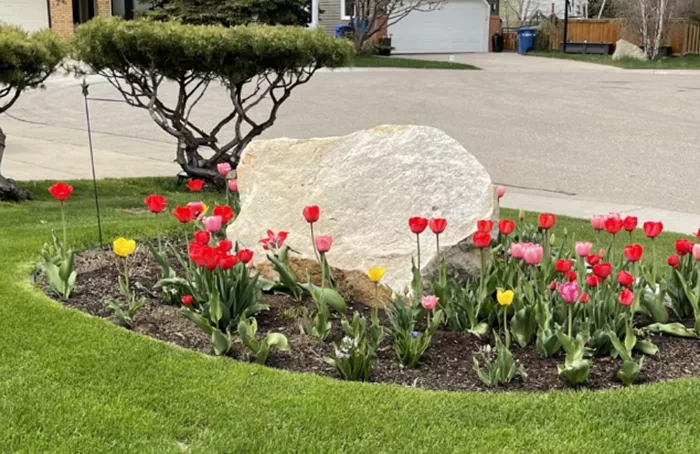Early spring can feel dull as you await the arrival of your favorite perennials. However, certain flowers, such as alliums, daffodils, tulips, and snowdrops, bloom in March. To enjoy these vibrant blooms in spring, plant them in the fall.
Soil Requirements
These bulbs are particular about their growing conditions. They thrive in sandy soil with a pH of 6.0 to 7.0. Before planting, mix a good amount of compost into the soil. Ensure the location is well-drained; otherwise, the bulbs may rot if the soil is waterlogged.
Choosing and Storing Bulbs
Select spring bulbs in late summer or early fall. Choose firm bulbs with their papery skin intact. Store them in paper bags in your refrigerator until you’re ready to plant. Keep them away from fruits like apples and bananas, as the ethylene gas from these fruits can harm the flower buds. Aim to plant within a week of purchase.
Planting Guidelines
Timing: Plant in early September to allow the bulbs to establish roots before the frost. Most bulbs need three to eight weeks to root properly.
Depth: Follow the planting depth indicated on the package, typically 6 to 8 inches, with the pointy side up. Space them 4 to 6 inches apart.
Location: Ensure good drainage by planting on slopes or in raised beds, as bulbs can rot in low-lying areas. Plant in rows or clusters.
Watering and Mulching: Water thoroughly after planting and add 2 to 3 inches of mulch to protect against freezing and thawing cycles.
Aftercare
Once the bulbs bloom, deadhead the flowers but allow the leaves to die naturally. The leaves will continue to feed the bulb during this time. You can add bone meal to support this process and water well.
As the bulbs spread, you may need to divide them. To do this, dig them up, separate the bulbs, and replant them at the recommended spacing.
Flower Varieties
Alliums: Related to garlic and leeks, alliums have a pleasant scent when cut. They produce clusters of star-like flowers on long stems and come in various colors and sizes. Taller varieties may need staking.
Daffodils (Narcissus): These early bloomers multiply quickly, so plan for their spacing. If they do not flower well, consider a low-nitrogen, high-potassium fertilizer.
Tulips: Available in many colors and shapes, tulips are a garden favorite. They spread by forming smaller bulbs that grow into full-size bulbs over time.
Snowdrops: These small bulbs often bloom first in spring. Note that all parts of the snowdrop plant are toxic to humans and pets, so plant them safely away from children and animals. They prefer some shade and can thrive in average soil.
With the right care, these beautiful flowers will add color and charm to your garden for years. Ensure your planting bed is well-drained and enriched with compost annually.
Related topics:
- Rare African Corpse Flower Blooms in Atlanta: A Once-in-a-Lifetime Event
- Try This Visual Design Trick to Style Your Houseplants
- Native Plants and Trees Bring Character and Color to Rice Quad


